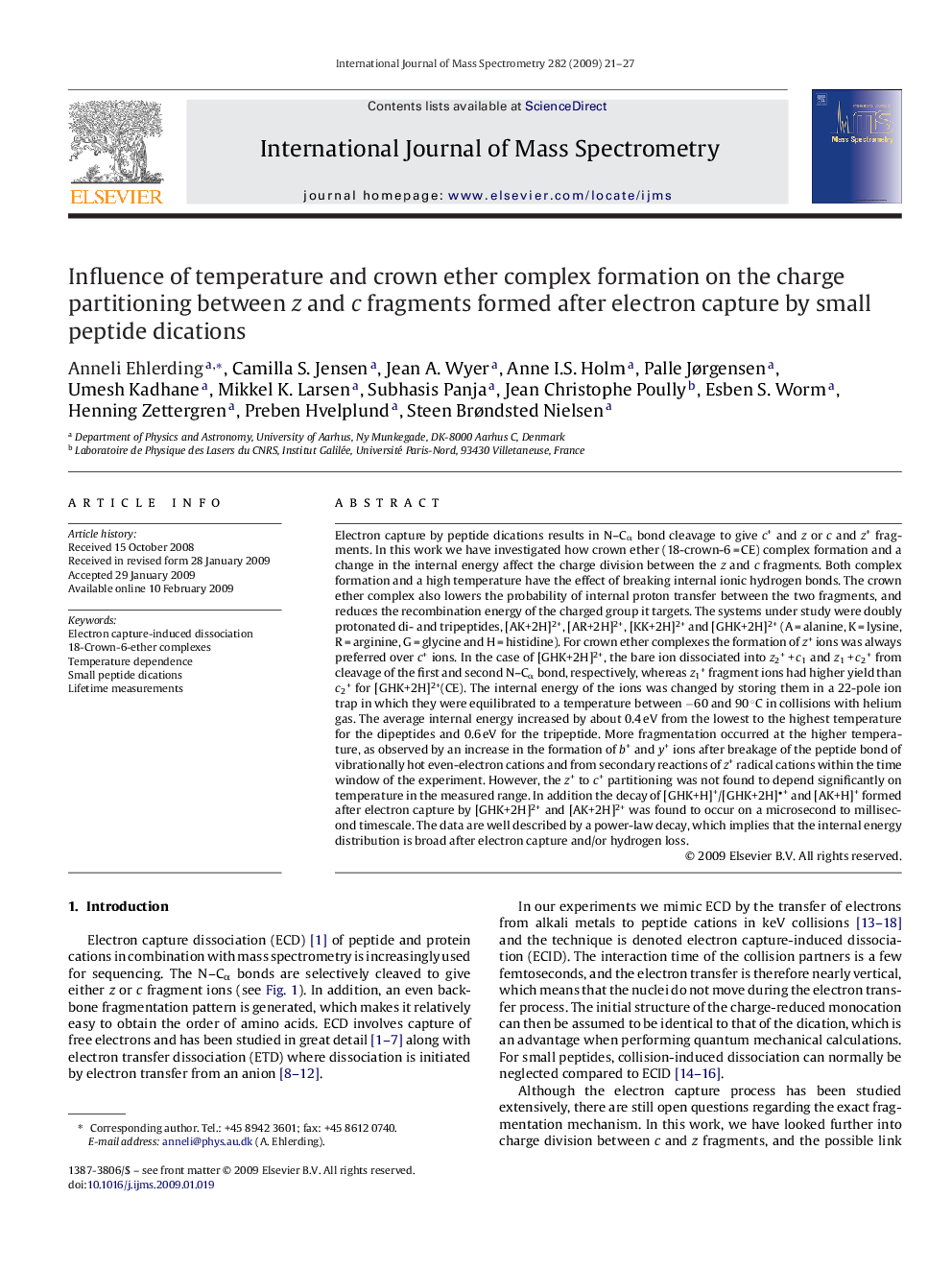| کد مقاله | کد نشریه | سال انتشار | مقاله انگلیسی | نسخه تمام متن |
|---|---|---|---|---|
| 1193700 | 1492343 | 2009 | 7 صفحه PDF | دانلود رایگان |

Electron capture by peptide dications results in N–Cα bond cleavage to give c+ and z or c and z+ fragments. In this work we have investigated how crown ether (18-crown-6 = CE) complex formation and a change in the internal energy affect the charge division between the z and c fragments. Both complex formation and a high temperature have the effect of breaking internal ionic hydrogen bonds. The crown ether complex also lowers the probability of internal proton transfer between the two fragments, and reduces the recombination energy of the charged group it targets. The systems under study were doubly protonated di- and tripeptides, [AK+2H]2+, [AR+2H]2+, [KK+2H]2+ and [GHK+2H]2+ (A = alanine, K = lysine, R = arginine, G = glycine and H = histidine). For crown ether complexes the formation of z+ ions was always preferred over c+ ions. In the case of [GHK+2H]2+, the bare ion dissociated into z2+ + c1 and z1 + c2+ from cleavage of the first and second N–Cα bond, respectively, whereas z1+ fragment ions had higher yield than c2+ for [GHK+2H]2+(CE). The internal energy of the ions was changed by storing them in a 22-pole ion trap in which they were equilibrated to a temperature between −60 and 90 °C in collisions with helium gas. The average internal energy increased by about 0.4 eV from the lowest to the highest temperature for the dipeptides and 0.6 eV for the tripeptide. More fragmentation occurred at the higher temperature, as observed by an increase in the formation of b+ and y+ ions after breakage of the peptide bond of vibrationally hot even-electron cations and from secondary reactions of z+ radical cations within the time window of the experiment. However, the z+ to c+ partitioning was not found to depend significantly on temperature in the measured range. In addition the decay of [GHK+H]+/[GHK+2H]+ and [AK+H]+ formed after electron capture by [GHK+2H]2+ and [AK+2H]2+ was found to occur on a microsecond to millisecond timescale. The data are well described by a power-law decay, which implies that the internal energy distribution is broad after electron capture and/or hydrogen loss.
The effect of crown ether complex formation on the fragmentation of [GHK+2H]2+ after electron capture.Figure optionsDownload as PowerPoint slide
Journal: International Journal of Mass Spectrometry - Volume 282, Issues 1–2, 15 April 2009, Pages 21–27